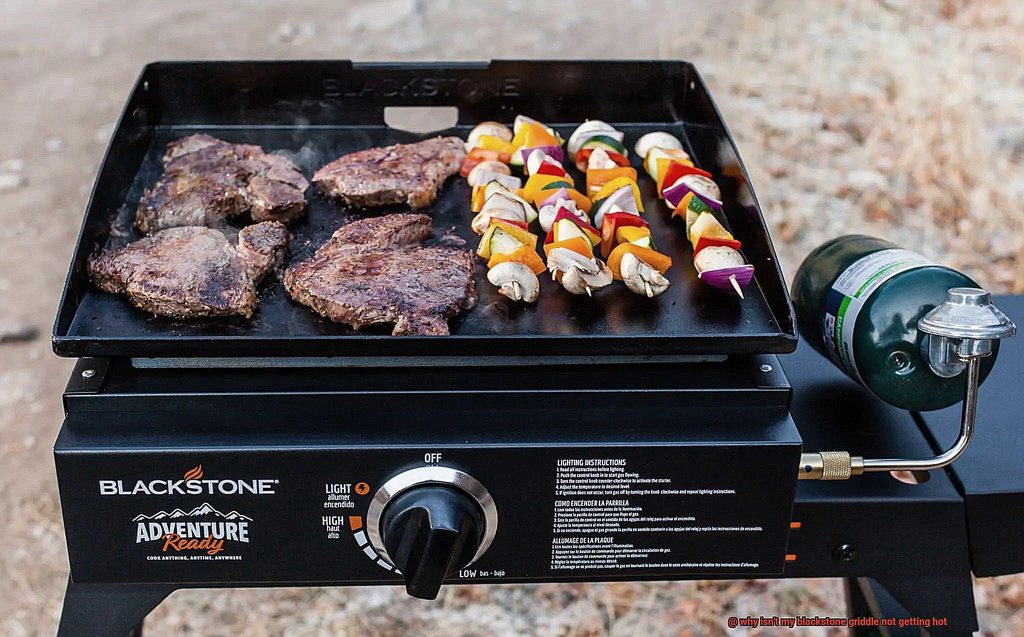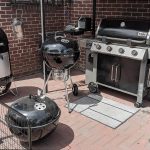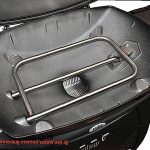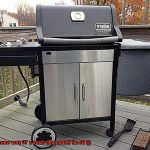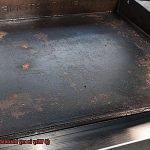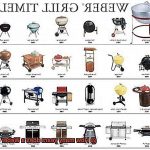Are you ready to cook up a storm on your Blackstone griddle, but find that it’s not getting hot? Don’t let this common problem dampen your spirits or ruin your cookout plans. No searing marks on your steak, no sizzle in your veggies, and worst of all, hungry guests waiting on their food – we feel you.
We’re here to help you troubleshoot the issue and get that griddle heating up again. In this blog post, we’ll explore the possible reasons why your Blackstone griddle may not be heating up properly. From minor issues like a clogged burner to more serious problems like a faulty regulator, we’ve got you covered.
But wait, before we dive into the nitty-gritty of fixing your griddle, let’s take a moment to consider another possibility – could it be that you’re not using the right cooking techniques? Cooking on a griddle is different from cooking on a traditional grill. If you’re not familiar with the right methods, it could be hindering the heat output of your griddle.
So put on your chef hats and join us as we uncover the root cause of your poorly heating Blackstone griddle. By the end of this post, you’ll have some handy tips and tricks up your sleeve to ensure that every meal cooked on your griddle is a sizzling success.
Contents
Reasons Why Your Blackstone Griddle Is Not Getting Hot
If you’re an avid griller, there’s nothing more frustrating than a Blackstone griddle that won’t heat up properly. Not to worry, though; there are several potential causes of this issue, and with a bit of troubleshooting, you can identify the root cause and get back to cooking up a storm.
One common reason why your Blackstone griddle may not be getting hot is due to a faulty regulator. The regulator controls the flow of gas from your propane tank to your griddle, and if it’s not functioning correctly, it can restrict the amount of gas that reaches the burners. This can result in a weak flame and low heat output. To check if this is the issue, make sure your propane tank is full and properly connected to your griddle. If everything looks okay but your flame is still weak, it may be time to replace the regulator.
Another potential cause of low heat output is a clogged or blocked burner tube. Over time, grease and debris can accumulate on the burner tube, restricting the flow of gas and preventing your griddle from heating up efficiently. To fix this issue, you’ll need to clean your burner tube thoroughly. You can use a wire brush or a cleaning solution designed specifically for griddles to remove any buildup on the tube.
Keeping your griddle clean and level is also crucial for ensuring that it heats up evenly. Grease and debris can accumulate on the surface of your griddle or in the drip tray, which can impede heat flow and reduce its efficiency. Regularly cleaning your griddle will help prevent these issues from occurring. Additionally, if your griddle isn’t sitting level, it can cause hot spots and cold spots on the cooking surface. Check that all legs are firmly in place and adjust as needed.
Finally, if none of these solutions work, there could be an issue with the ignition system or gas valve. In such cases, it’s best to contact a professional technician who can diagnose and fix the problem.
In conclusion, there are several potential reasons why your Blackstone griddle may not be getting hot, but by troubleshooting the issue carefully, you can identify and address the root cause. By ensuring that your regulator is working correctly, cleaning your burner tube and cooking surface, and keeping your griddle level, you can enjoy perfectly cooked meals every time.
Propane Tank
There’s nothing quite like the taste of perfectly grilled food. However, if your Blackstone griddle isn’t heating up properly, it can be a frustrating experience. Fear not, grilling enthusiasts. Let’s troubleshoot the issue together and get back to what we love doing best – grilling.
One of the most important components to check when you’re experiencing a lack of heat in your Blackstone griddle is the propane tank. Don’t worry; it’s not as complicated as it sounds. Here are some tips to help you out:
First things first, check that there’s enough propane in the tank. If the propane level is low, you won’t get a strong enough flame to heat up your griddle properly. Nobody wants their meal ruined by a weak flame.
Next, consider the age of your propane tank. Over time, rust and debris can accumulate, which can clog gas flow and prevent your griddle from heating up. To avoid this issue, replace your propane tank every five years.
Another important factor to consider is leaks in the propane tank or its connections. You can easily check for leaks by using soapy water and applying it to the connections and hoses. If you see any bubbles forming, turn off the propane immediately and seek professional help.
Lastly, make sure that your propane tank’s valve is completely open. It may seem like a no-brainer, but sometimes people forget to turn on the valve or don’t turn it on all the way, which can cause a weak flame or no flame at all.
Clogged Burner
You may want to check for a clogged burner. This is a common issue that can arise over time due to grease and debris buildup inside the burner, leading to restricted gas flow and reduced heat.
To get your griddle back in action, begin by turning it off and disconnecting it from the gas source. Remove the griddle top and locate the burners, inspecting each one for any signs of obstruction. Depending on your model, you may have one or multiple burners to clean.
If you spot any buildup or debris inside the burner, use a wire brush or toothbrush to carefully clean it out, making sure to remove any loose debris and wiping down the burner with a damp cloth. For more stubborn clogs, specialized cleaners designed for griddle burners can be found at most hardware stores, which help dissolve tough grease and carbon buildup.
Once all burners are clean, reassemble the griddle and reconnect it to the gas source. Turn on the gas and ignite the burners to test their heat output. Voila. Your Blackstone griddle should now be heating up like new again.
Faulty Regulator
It could be due to a faulty regulator, which controls the gas flow and heat output. Don’t worry, diagnosing this issue is easy. Let me guide you through the steps.
First things first, make sure your propane tank is full and turned on. Turn on your griddle and observe if the flames are weak or non-existent. If so, try adjusting the temperature control knob to see if it makes a difference. If not, turn off your griddle and disconnect it from the propane tank.
Now, inspect your regulator for any signs of damage, such as cracks, leaks, or rust. These are all indications that it’s time to replace your regulator entirely. When purchasing a new one, make sure it’s compatible with your Blackstone griddle model and propane tank.
Investing in a high-quality regulator is also recommended as it’ll last longer and prevent future issues with heating. After all, nobody wants to deal with a non-heating griddle when they’re craving some delicious pancakes or burgers.
Regular maintenance and inspection of your griddle’s parts, including the regulator, can prevent mishaps and ensure safe and enjoyable grilling experiences. Remember to clean your burner regularly to ensure smooth gas flow and maximum heat output.
High Winds or Low Temperatures
When the temperature drops, your griddle needs more time to heat up and maintain its temperature. But fear not. You can preheat your griddle for an extended period before cooking to increase its temperature. This will help compensate for the cold weather. To further prevent heat loss, use a grill cover or insulated blanket to trap the heat and keep your griddle at a consistent temperature.
However, if the wind is blowing, things can get tricky. High winds can cause rapid heat loss, making it challenging to keep up with the desired temperature. If your griddle doesn’t have a wind guard, the flames from your propane tank can be blown out, causing the griddle to lose its heat. The solution? Invest in a wind guard that surrounds the griddle and protects it from strong winds. This will help you maintain the temperature you need for perfect cooking results.
It’s crucial to note that you should never use your Blackstone griddle indoors or in enclosed spaces – especially when experiencing low temperatures or high winds. Doing so can lead to carbon monoxide poisoning, which can be fatal.
Ignition System or Gas Valve
Your ignition system and gas valve are essential for getting your griddle hot, and if they’re not working correctly, your cooking experience could be a disaster.
Let’s start with the ignition system. One common issue is a clogged electrode. Grease and debris can accumulate on the electrode over time, preventing it from producing the spark necessary to ignite the gas.
Don’t worry though, a quick fix is as simple as using a wire brush or sandpaper to clean the electrode. If the issue is a faulty spark module, replacing it will get your ignition system back on track.
Now let’s move on to the gas valve. A clogged burner tube can prevent gas from flowing properly to the burners, resulting in low or no heat. To solve this problem, remove the burner tubes and give them a thorough cleaning with either compressed air or a wire brush.
Another potential issue with the gas valve is a faulty regulator that controls the pressure of gas flowing into the burners. Replacing the regulator is necessary if this is the case.
Tips for Ensuring Your Blackstone Griddle Works Efficiently
A Blackstone griddle is a fantastic choice for outdoor cooking. However, it can be frustrating if it’s not heating up correctly. Here are some tips to ensure that your Blackstone griddle is working efficiently and producing delicious meals every time.
Keep Your Griddle Clean
One of the most critical factors to ensure your Blackstone griddle works efficiently is to keep it clean. Leftover grease or food debris can interfere with the heating element and prevent it from reaching its full potential. Before each use, clean your griddle thoroughly using a scraper or spatula to remove any excess food particles. You can also use a specially formulated griddle cleaner to get rid of any stubborn stains or buildup.
Check the Propane Tank and Regulator
If the propane tank is low or the regulator is not functioning correctly, this can affect the amount of heat that your griddle is able to produce. It’s important to make sure your propane tank is full and that the regulator is appropriately attached and functioning as it should.
Season Your Griddle Properly
Before using your Blackstone griddle for the first time, make sure to season it properly. This involves applying a layer of oil to the griddle surface and heating it on high for about 30 minutes. This will create a non-stick surface and prevent food from sticking to the griddle.
Preheat Your Griddle Correctly
Make sure to preheat your Blackstone griddle properly before cooking. This can take anywhere from 10-20 minutes depending on the size of the griddle and desired temperature. Preheating ensures that the griddle surface is evenly heated and ready for cooking.
Check for Blockages in Burner Tubes
If you find that your Blackstone griddle is not getting hot enough, check the burner tubes for any blockages or debris. If these are clogged, they can restrict the flow of propane and reduce heat output. Additionally, make sure that the air shutter is appropriately adjusted to allow for proper air flow.
Protect Your Griddle from the Elements
If you’re grilling outside on a particularly cold or windy day, this can affect the temperature of your griddle. Try to find a sheltered spot or invest in a wind guard to help protect your griddle from the elements.
How to Check the Propane Tank Level
Checking the propane tank level on your Blackstone griddle is an important step in ensuring that your griddle heats up properly and your food cooks evenly. Here are five sub-sections that will guide you on how to check the propane tank level on your Blackstone griddle:
Using a Propane Tank Gauge
A propane tank gauge is an easy-to-use device that can be attached to the top of your propane tank to measure the amount of propane left in it. Purchase a propane gauge at your local hardware store or online, attach it to the top of your propane tank, and read the level displayed. If the level is low, it’s time to refill your tank.
Performing a Manual Test
If you don’t have a propane tank gauge, you can perform a manual test by turning off all burners on your griddle and disconnecting the regulator from the propane tank. Pour hot water down the side of the propane tank and feel for a cool spot. The cool spot indicates where the propane level is – if it’s below half, it’s time to refill.
Being Cautious
Always use caution when handling propane tanks and follow manufacturer guidelines for proper usage and maintenance. Never handle propane tanks without proper training or tools. As you check the propane tank level, ensure that there are no gas leaks or damages to the tank.
Having a Backup Propane Tank
It’s always a good idea to have a backup propane tank on hand in case the current one runs out during cooking. This will ensure that you never run out of gas while cooking and will prevent interruptions in your cooking process.
Regularly Checking Your Propane Tank Level
Checking your propane tank level should be done before every use of your Blackstone griddle. A low or empty propane tank can cause poor heating performance or even prevent your griddle from heating up at all. By regularly checking your propane tank level, you can ensure that your Blackstone griddle is getting hot and ready for your next delicious meal.
How to Clean the Burner Regularly
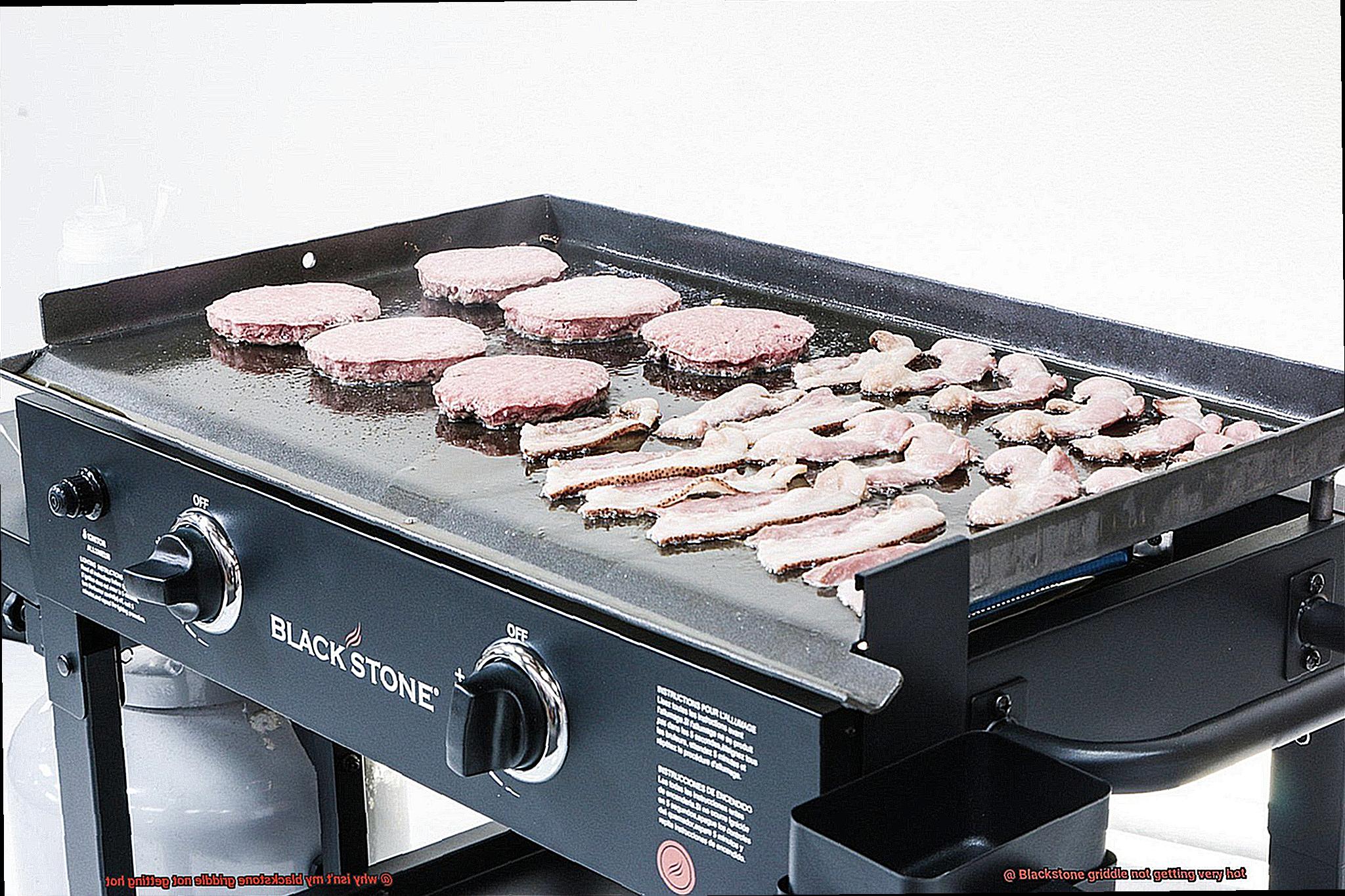
A Blackstone griddle is a fantastic investment for those who love cooking outdoors. It provides a large cooking surface, heats up quickly, and is easy to clean. However, if you notice that your griddle is not getting hot enough or has uneven heat distribution, it might be time to clean the burner.
Why cleaning the burner is essential
The burner is the heart of your Blackstone griddle, responsible for heating up the cooking surface and providing even heat distribution. If it gets clogged with debris, grease, or food particles, it can affect its performance and prevent it from heating up properly. Regular cleaning ensures that the burner operates at its full potential, providing even heat and consistent cooking temperatures.
Preparing to clean the burner
Before starting, turn off your Blackstone griddle and let it cool down completely. Remove the griddle top and set it aside. You should be able to see the burner beneath it. It’s essential to inspect the burners for any damage or signs of wear. If you notice any cracks or other signs of wear, you may need to replace them to avoid any potential safety hazards.
Cleaning the burner
Using a wire brush or scraper, remove any debris or rust from the surface of the burners. It’s crucial to clean all sides thoroughly and remove any particles that may be stuck in the burner holes. For stubborn grease or other buildup, use a cleaning solution specifically designed for griddles to help dissolve any residue.
It’s vital to rinse the burners off with water and dry them completely before reinstalling them into the griddle. Also, inspect and clean the gas ports where the burners attach to ensure that they are free from debris.
Inspecting and maintaining the burner
Regularly inspecting and maintaining the burner can help extend its lifespan and prevent costly repairs down the line. Check for any signs of wear and tear, such as cracks or rust. If you notice any issues, replace the burner immediately.
Additionally, make sure that the gas ports and burner holes are free from debris. You can use a wire brush or scraper to remove any buildup that may have accumulated over time.
When to call a professional
If you notice any issues with your Blackstone griddle, such as uneven heat distribution or low temperatures, it might be time to call a professional. They can diagnose the problem and provide a solution that ensures your griddle operates at its full potential.
How to Check the Regulator for Functionality
Don’t worry, a faulty regulator may be the cause. Here’s how to check if your regulator is functioning properly and get your griddle back to cooking up a storm.
Step 1: First, turn off the gas supply to your griddle and disconnect the regulator from the propane tank.
Take a close look at the regulator and hose for any visible damage or wear. If you see any cracks or dents, it’s best to replace the regulator.
Step 2: Reconnect the regulator to the propane tank and turn on the gas supply.
With the griddle turned off, turn on one burner and listen for a hissing sound. If you don’t hear anything, there may be an issue with the regulator or propane supply. Try tightening connections or replacing the regulator if necessary.
Step 3: If you do hear a hissing sound, turn off the burner and wait a few minutes before repeating this step with each of the other burners.
If all of the burners produce a consistent hissing sound, then your regulator is likely functioning properly.
It’s important to note that regulators can wear out over time due to exposure to heat and other elements. If you suspect that your regulator is not functioning properly, it’s best to replace it rather than attempt to repair it. A faulty regulator can be dangerous and lead to gas leaks or even fires.
If you’re not comfortable checking the regulator yourself, it’s always best to consult with a professional or contact Blackstone customer support for assistance. Safety should always be a top priority when working with propane and gas appliances.
What to Do in Case of High Winds or Low Temperatures
Whether you’re facing high winds or low temperatures, there are steps you can take to ensure that your griddle performs at its best. Here are five sub-sections to help guide you through the process.
Protect Your Griddle From High Winds
Grilling on a windy day can be frustrating, as the wind disrupts the flow of heat and causes uneven cooking. To combat this issue, use a wind guard to protect your Blackstone griddle. A wind guard can be as simple as a portable grill canopy or a DIY shield made from plywood or metal. This will help to protect your griddle from gusts of wind and keep the heat contained. You can also adjust the temperature control to a higher setting to compensate for the loss of heat caused by wind.
Combat Low Temperatures
When temperatures drop, it can become more challenging to get your Blackstone griddle hot enough to cook properly. Start by checking that your propane tank is full and turned on. Also, check the regulator, which controls the flow of gas from the tank to the burner.
If it is damaged or faulty, it may need replacing. Another possible cause of low temperatures is a dirty or clogged burner. To clean the burner assembly, turn off the griddle and disconnect the propane tank. Use compressed air or a wire brush to remove any buildup.
Preheat Your Griddle for Longer Periods
In cold weather, it may take longer for your Blackstone griddle to reach its ideal cooking temperature. Allow your griddle more time than usual to preheat before cooking. You can also cover your griddle with a lid or aluminum foil to help retain heat. Taking these extra steps will ensure that your food cooks evenly and thoroughly.
Use Thicker Cooking Oil
Using thicker cooking oil such as peanut oil in colder temperatures can be helpful because it has a higher smoke point, meaning it can handle higher temperatures without burning. Using thicker oil will also help to create a non-stick surface and prevent sticking or burning of your food.
Adjust Heat Settings
Adjusting the heat settings on your Blackstone griddle is crucial when using it in high winds or low temperatures. High winds can cause flames to blow out and result in uneven heat distribution. Therefore, it is important to adjust the heat settings higher to compensate for the loss of heat caused by wind. In colder temperatures, adjust the heat settings lower to ensure that the griddle doesn’t overheat and burn your food.
When to Contact a Professional Technician for Help
When it comes to troubleshooting issues with your griddle, knowing when to contact a professional technician for help is crucial. While some problems can be solved with simple solutions, others may require the expertise of a trained professional.
One of the main issues that may require professional assistance is a malfunctioning ignition system. If you’re unable to light your griddle using the ignition system, it could indicate a more complex problem with the spark module or wiring. Attempting to fix this issue on your own could result in further damage or even injury. A technician will have the necessary tools and expertise to safely diagnose and repair any issues.
Another critical reason to contact a professional technician is if you suspect a gas leak. Gas leaks are not only dangerous but can also cause long-term damage to your griddle if left unaddressed. If you smell gas or notice any signs of a leak, turn off the gas supply immediately and contact a technician right away. This is not something that should be handled by anyone other than a trained professional.
In addition, if you notice any unusual noises or vibrations coming from your griddle, it’s best to contact a technician for assistance. These symptoms could indicate mechanical issues that require specialized knowledge and tools to diagnose and repair. Don’t attempt to fix these issues yourself as it could lead to further damage or even harm.
0yTx26tECOg” >
Conclusion
If you’re experiencing issues with your Blackstone griddle not heating up, don’t worry – there are several potential solutions to try.
By taking the time to properly diagnose and address any issues, you’ll be back to cooking up delicious meals on your griddle in no time.

